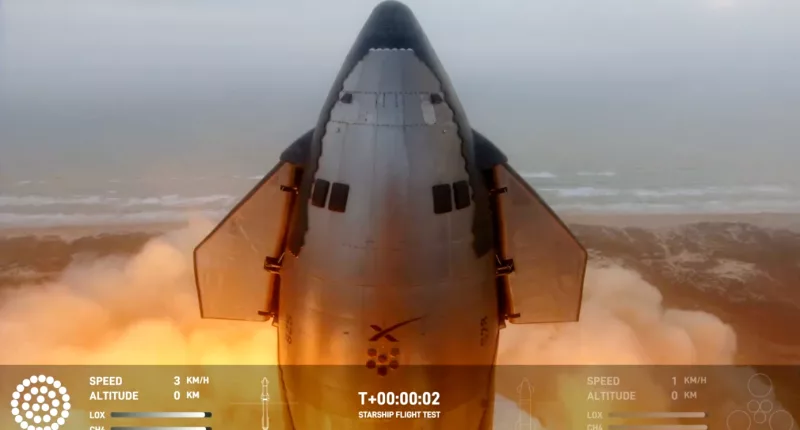On March 14, SpaceX’s ambitious, ultra-heavy interstellar space travel rocket, ‘Starship’, successfully launched on its third and most ambitious test flight to date. While the mission ultimately resulted in the loss of both the Super Heavy booster and the Starship spacecraft during their return descent, it nonetheless marked a significant milestone for the company.
Lifting off from Starbase, Texas, on the 22nd anniversary of SpaceX’s founding, the Starship mission achieved a major feat by reaching orbital velocity. The Starship rocket, standing nearly 400 feet tall, lifted off from SpaceX’s Starbase test site in Boca Chica, Texas, at 9:25 a.m. ET. This marked the third and most ambitious test flight of the Starship rocket to date. The primary objectives of the test flight were to demonstrate the rocket’s capability to reach orbit and to test new technologies that will be essential for future space missions. The spacecraft successfully reached orbit, marking the furthest and fastest flight of Starship to date.
“This is the furthest and fastest that Starship has ever flown,” SpaceX officials said during their live broadcast of the event. Elon Musk, CEO of SpaceX, took to social media platform X to celebrate the news. “Starship reached orbital velocity! Congratulations @SpaceX team!!” read Musk’s post on the matter.
Starship reached orbital velocity!
Congratulations @SpaceX team!!
— Elon Musk (@elonmusk) March 14, 2024
Following its orbital velocity achievement, Starship embarked on its re-entry phase more than 40 minutes later, plunging back into Earth’s atmosphere. This step allowed engineers to observe and collect data on how the spacecraft withstands the intense heat generated during atmospheric re-entry. Despite the successes achieved during the test flight, SpaceX encountered challenges during the re-entry phase of the mission. Data suggested that the Super Heavy booster and the Starship spacecraft may have been lost while returning to Earth, falling short of the planned splashdown in the Indian Ocean. The Federal Aviation Administration (FAA) announced an investigation into the mishap.
“No public injuries or public property damage have been reported,” the FAA said. “The FAA is overseeing the SpaceX-led mishap investigation to ensure the company complies with its FAA-approved mishap investigation plan and other regulatory requirements.” “The team has made the call that the ship has been lost, so no splashdown today,” Dan Huot, communications manager at SpaceX, said during the live broadcast. “But again, just it’s incredible to see how much further we got this time around.”
Apart from reaching orbital velocity and re-entry, some of the other accomplishments during the third test flight include the the successful opening and closing of the Starship payload door. This seemingly basic function is essential for deploying satellites into space once Starship reaches orbit. The mission also included a “propellant transfer demonstration,” a maneuver that will be necessary for refueling Starship in orbit.





